Get PeakVisor App
Sign In
Search by GPS coordinates
- Latitude
- ° ' ''
- Longitude
- ° ' ''
- Units of Length

Yes
Cancel
Share ×

Scan the QR code and open PeakVisor on your phone
❤ Wishlist ×
Choose
Delete
Home to some of Mexico’s most iconic peaks, Parque Nacional Iztaccíhuatl-Popocatépetl (Izta-Popo National Park) is a federally protected region and popular outdoor recreation area. It contains 119 named mountains, the highest and most prominent of which is Popocatépetl (5,426m/17,935ft).
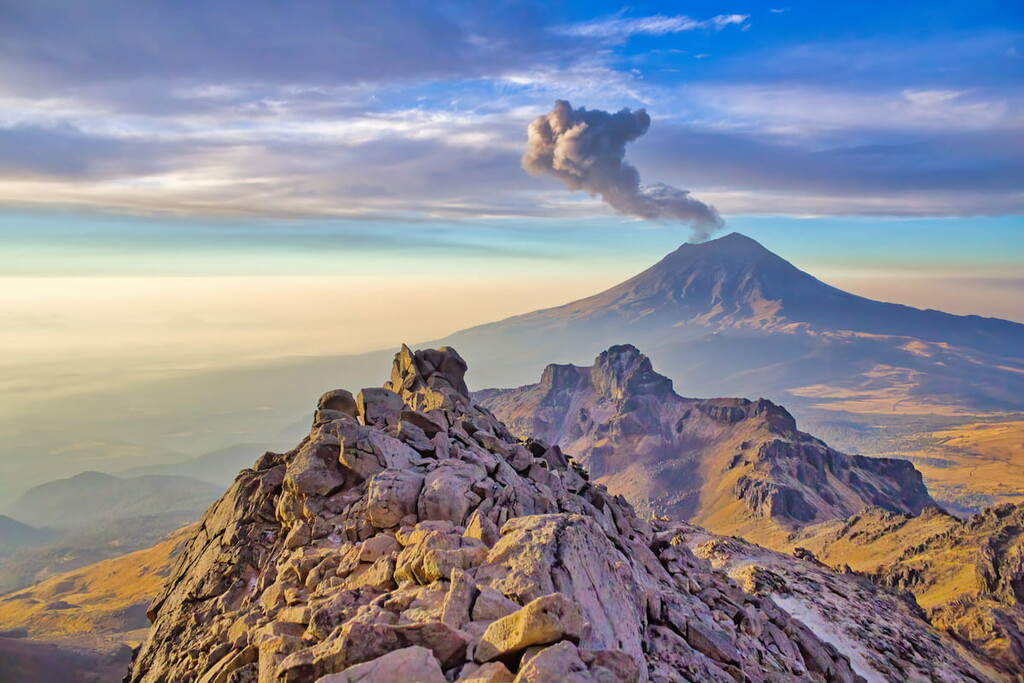
Izta-Popo National Park (Parque Nacional Iztaccíhuatl-Popocatépetl) is a major area of public land located in the south-central part of the country of Mexico. It contains some 39,819 ha (98,394 acres) of land, which makes it the tenth-largest national park in the country.
The park is located within the states of Mexico, Tlaxcala, Puebla, and Morelos, just to the east of Mexico City. It is located within parts of a number of municipalities, including Tetecala, Chalco, Texcoco, Ixtapaluca, Tlalmanalco, Amecameca, Atlautla, San Nicolás de los Ranchos, Chiautzingo, San Salvador el Verde, Nanacamilpa de Mariano Arista, and Tlahuapan.
Izta-Popo National Park is located in one of the most mountainous regions of Mexico within the Cordillera Neovolcánica. However, it also serves as a natural boundary between Mexico City to the west and the vast Puebla-Tlaxcala Valley (Valle de Puebla-Tlaxcala) to the east.
Furthermore, Izta-Popo National Park is located within driving distance of many of Mexico’s other major recreation destinations.

Some of the many parks located to the west of Izta-Popo include El Tepozteco National Park (Parque Nacional El Tepozteco), Lagunas de Zempoala National Park (Parque Nacional Lagunas de Zempoala), Nevado de Toluca National Park (Parque Nacional Nevado de Toluca), Cumbres del Ajusco National Park (Parque Nacional Cumbres del Ajusco), and Desierto de los Leones National Park (Parque Nacional Desierto de los Leones).
Home to well over a hundred mountains, including two of Mexico’s most notable volcanoes, Izta-Popo National Park is well known for its alpine landscapes.
Geologically, the mountains within the park are part of the Cordillera Neovolcánica, which is also called the Trans-Mexican Volcanic Belt. This range stretches across much of central Mexico, connecting Jalisco and Colima in the west with Veracruz in the east.
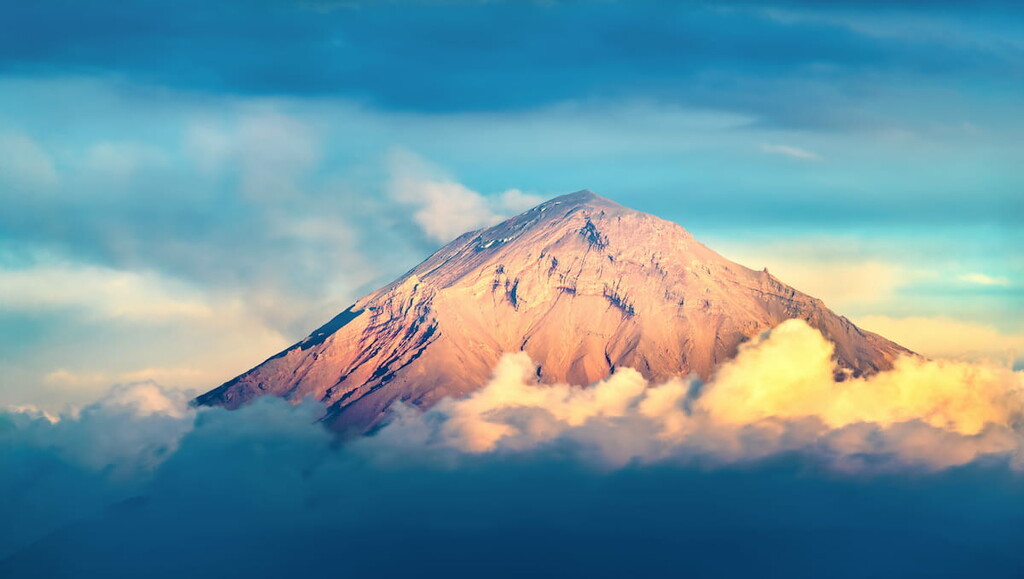
The mountains in the Cordillera Neovolcánica are believed to have formed as the Cocos and Rivera plates subducted below the North American Plate. This process led to widespread volcanism throughout the region and the formation of the twin volcanoes of Popocatépetl and Iztaccihuatl.
Both mountains are considered to be stratovolcanoes, though only Popocatépl is thought to be active. Nevertheless, lavas from both mountains have been primarily andesitic in years past, though dacite, as well as a mixture of andesites and dacites, have also been seen in the region.
Furthermore, until very recently, both Iztaccihuatl and Popocatépl were glaciated, making them two of the few glaciated peaks in the country (the other being Pico de Orizaba). Unfortunately, Glacier Norte, which was located on Popocatépl’s north slopes, became extinct in the early 2000s.

Major peaks include Popocatépetl, Iztaccíhuatl, Tláloc, Cerro Telapón, Cerro Papayo, and Cerro Gordo.
Although it’s best known for its mountainscapes, Izta-Popo National Park is also a particularly biodiverse area. The park itself is home to hundreds of different plant and animal species, many of which are typical to the area.
As the Cordillera Neovolcánica is located along a transition zone between the neotropical and the nearctic realms, the region is the perfect habitat for an excellent mix of ecosystems. Within the park there are many different ecosystems, including pine forests, grasslands, alpine areas, and mixed pine-fir forests. Altogether, there are a few hundred different plant and fungi species found in the park alone, which is quite impressive given its relatively small size.
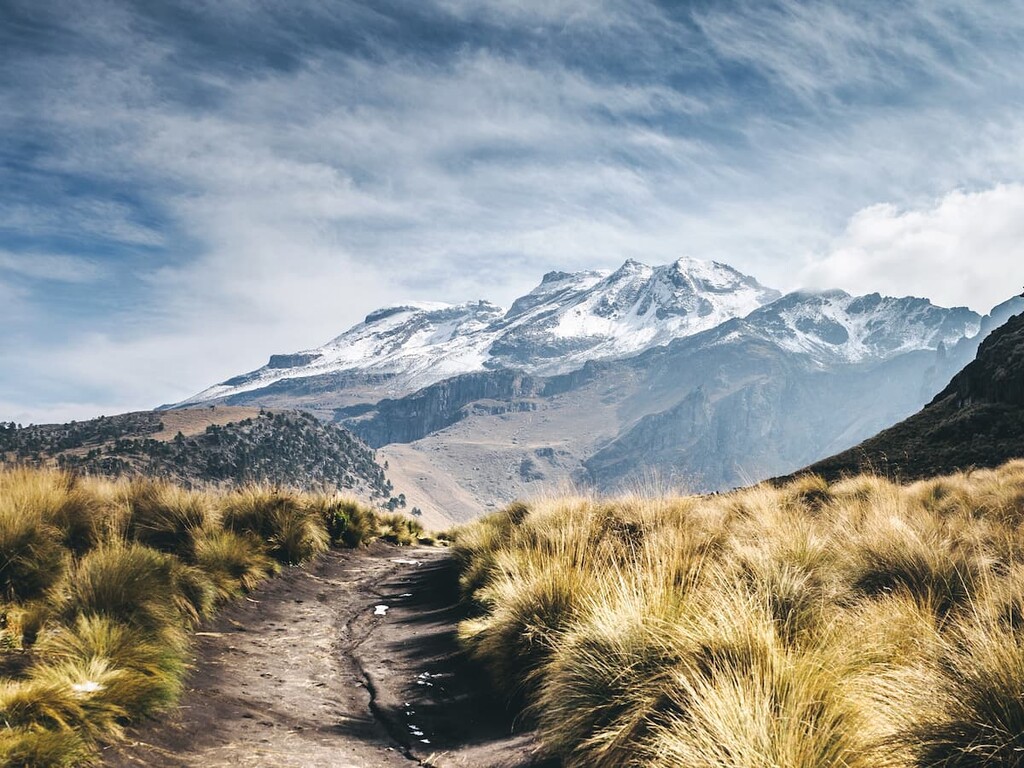
Furthermore, Izta-Popo National Park is home to some 50 mammal species. Some of the more notable species found in the park include white-tailed deer, grey foxes, lynxes, coyotes, opossums, and badgers.
Perhaps the most unique mammal found in the region is the teporingo (volcano rabbit). It is the second-smallest rabbit species in the world, weighing just 390 to 600 g (0.9 to 1.3 lbs). The teporingo is endemic to the Cordillera Neovolcánica and it is currently endangered. There are believed to be just over a thousand teporingo left and you can sometimes find them burrowing in alpine regions in the park.
The land in and around what is now Izta-Popo National Park has been inhabited by humans for thousands of years. Upon the arrival of Europeans to the region in the sixteenth century, many peoples, including the Aztec Empire, the Nahuas, and the Otomi had been living in the region since time immemorial.
Indeed, the names of both Popocatépetl and Iztaccíhuatl are derived from the Nahuatl language and they both played prominent roles in Aztec mythology. Interestingly, an eruption of Popocatépetl around 1,000 years ago is known to have buried a nearby village, preserving exceptional artefacts from the rich culture in the region prior to European contact.
The Spanish started arriving in the region around 1519 and they more heavily settled in the area after the fall of the Aztec Empire. Diego de Ordaz is believed to be the first European to have climbed Popocatépetl during this time, having made his ascent in 1519.

In the years after the fall of the Aztec Empire, a number of Spanish monasteries were established on the slopes of Popocatépetl during the sixteenth century. These fourteen monasteries were established by the Dominicans, Franciscans, and Augustinians during their attempts to evangelize the region at the bequest of Hernán Cortés. The monasteries were officially designated as UNESCO World Heritage Sites in 1994.
Izta-Popo National Park was actually the second national park in the country, after Desierto de los Leones. It was established in 1935 in order to protect the watersheds of the rivers that supply water to some of the country’s most populous cities and to preserve its exceptional alpine beauty.
Today, the park remains a very popular outdoor recreation destination, even though Popocatépetl has become particularly active in recent years.
Izta-Popo National Park is a particularly popular outdoor recreation destination, thanks to its proximity to Mexico City. While Popocatépetl is no longer open to hikers due to its volcanic activity, there are many other excellent trails in the park to choose from. Here are some of the best hikes to check out during your trip.
Perhaps the most popular climb in the park, the ascent of Iztaccihuatl is a fantastic choice among avid peak baggers. The trek to the top of Mexico’s third highest mountain normally involves a two day climb.
Due to the high elevation of the mountain, proper acclimatization is important. Furthermore, unless you are a particularly experienced mountaineer, it’s highly recommended that you hire a guide for your climb to the summit.
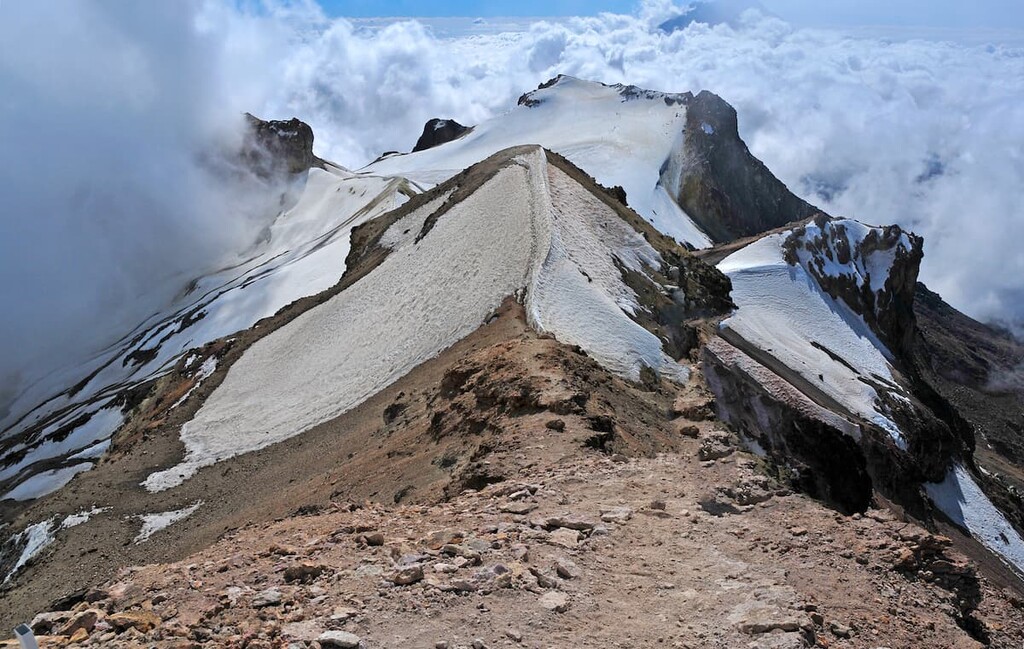
There are a number of major guide services in both Puebla and Mexico City that offer treks on Iztaccihuatl, so consider doing a bit of research on your options before leaving home.
The third-highest peak in the park, Tláloc was a sacred Aztec pilgrimage site to the north of Iztaccihuatl. Tláloc is currently home to a number of Aztec remains and its lofty summit makes for an excellent adventure.
While Tláloc isn’t as popular of a hike as Iztaccihuatl, the path to the summit is relatively straightforward, even if it requires a bit of off-trail hiking. Camping is also readily available around the mountain and no permits are necessary if you want to spend the night. Although you can often summit Tláloc in just one day, it also makes for a nice quick backpacking adventure.
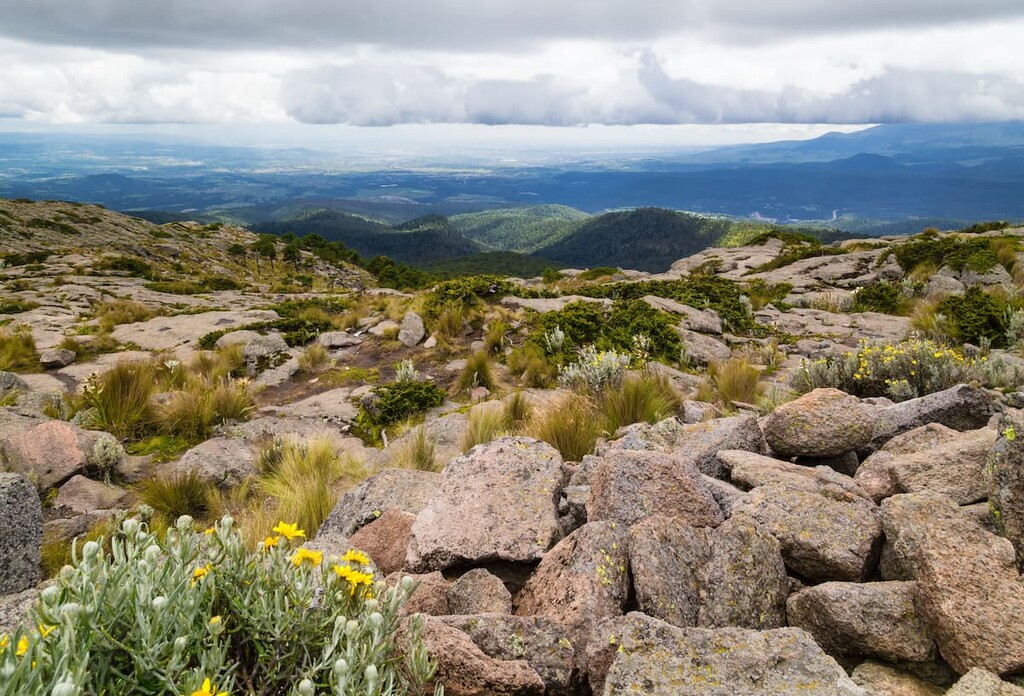
Looking for a place to stay near Izta-Popo National Park? Here are some of the best cities to check out:
With nearly 9 million residents, Mexico City is the largest city in all of Mexico. The city is situated just to the west of Izta-Popo National Park, making it an excellent place to start your adventure.
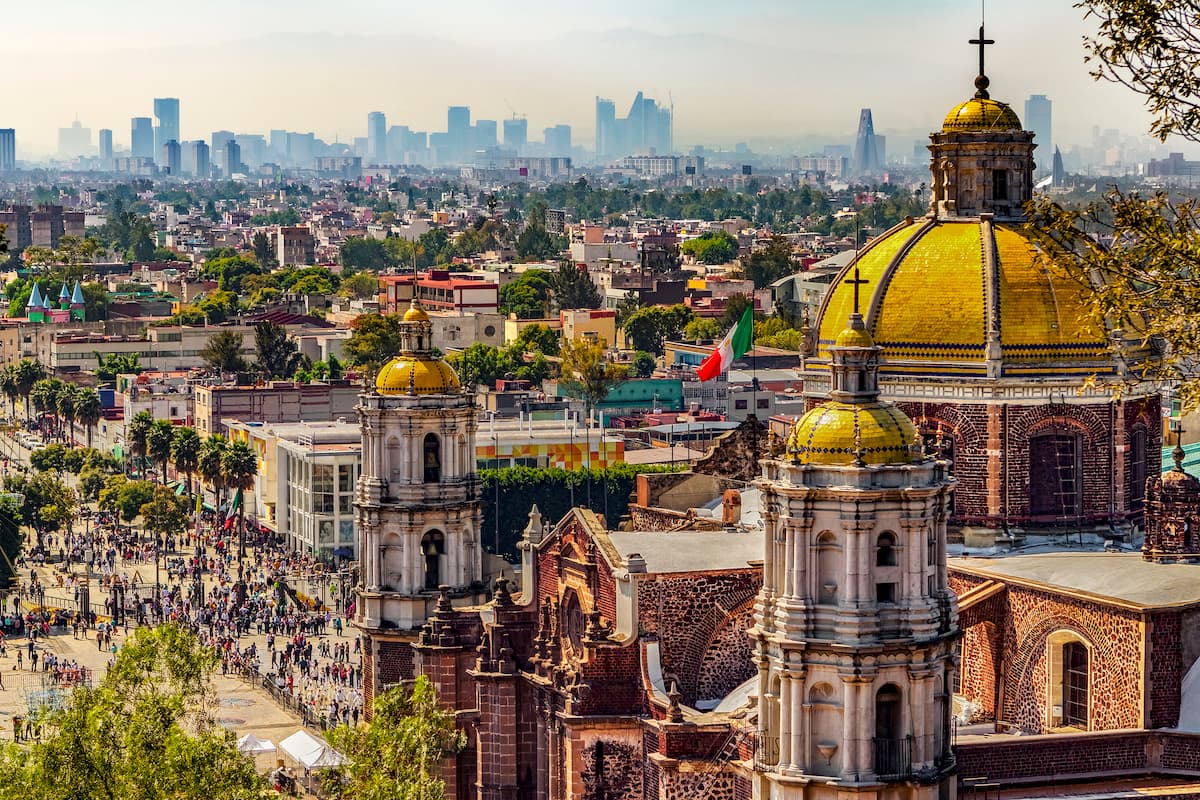
Mexico City is a hub for culture, commerce in transport in the country. It is easily the most urbanized area in Mexico, yet it retains some fantastic cultural artifacts. The city’s proximity to Izta-Popo National Park and to many of Mexico’s other major recreation areas means it’s a popular tourist destination.
Furthermore, Mexico City is home to one of the busiest airports in North America, offering great connections both within Mexico and overseas. It also has an extensive public transportation system, with connections across central Mexico.
Tlaxcala de Xicohténcatl, more commonly known as Tlaxcala, is the capital city of the state of Tlaxcala. It is located to the east of Izta-Popo National Park and is home to about 90,000 residents. The city is a great place to visit if you’re interested in colonial era architecture and its central area is home to some excellent historic buildings.
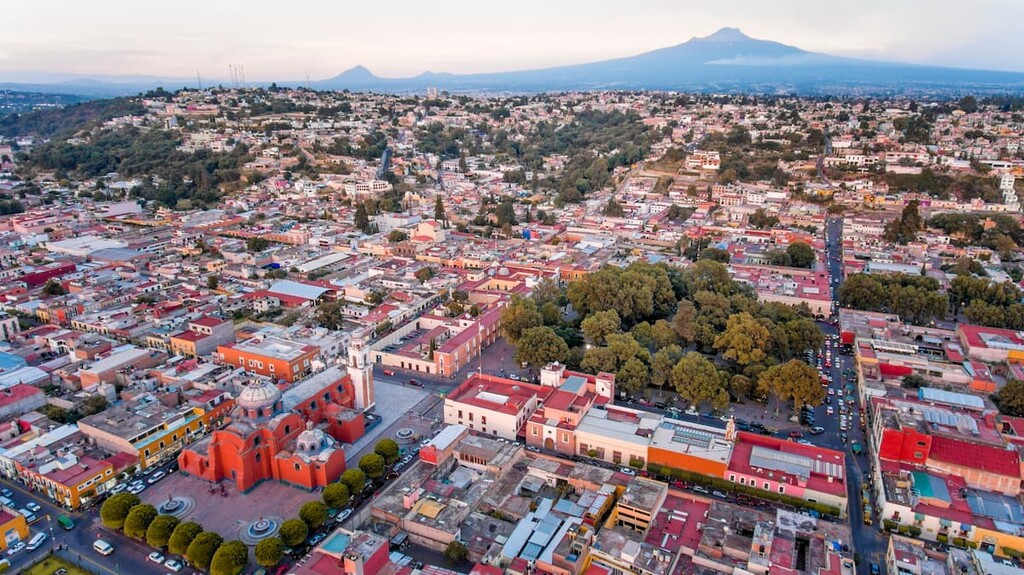
Puebla de Zaragoza, better known as Puebla, is the capital and most populous city in the state of Puebla with some 1.5 million residents. It once served as an important stopping point between the ports at Veracruz to the east and Mexico City to the west.
These days, Puebla is well-known for its excellent historical buildings which are home to a whole host of different architectural styles. Part of the city is also a UNESCO World Heritage Site. Additionally, Puebla is one of the country’s largest educational centers as it is home to a number of prestigious universities.
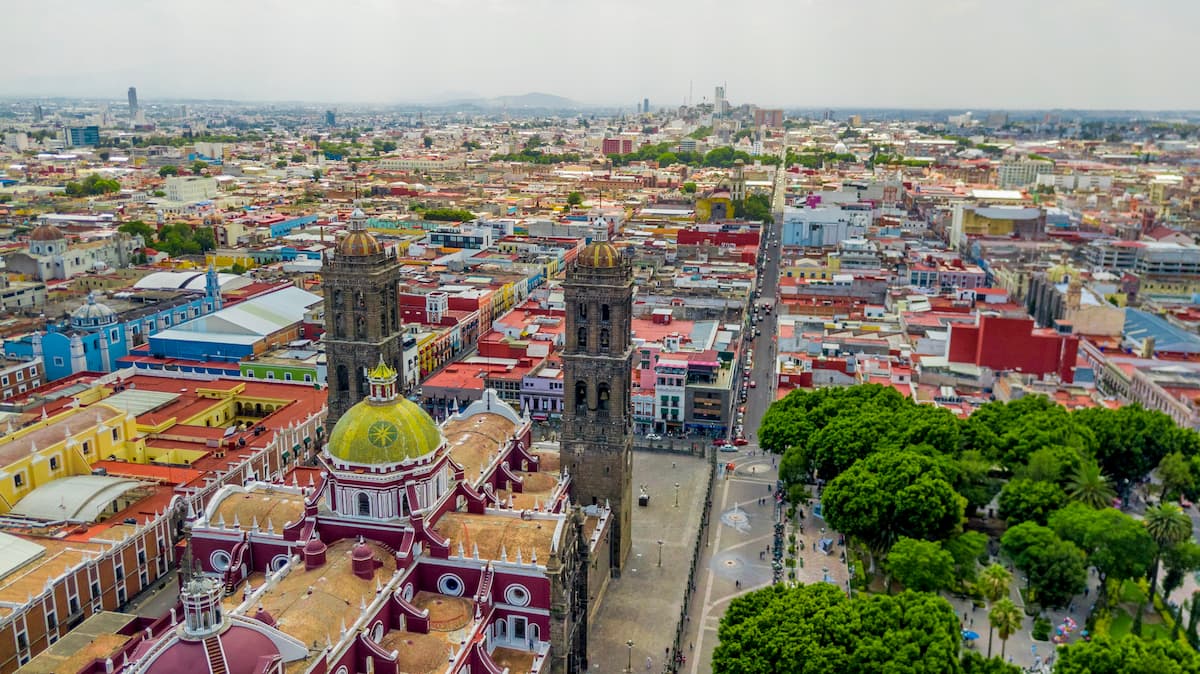
The small town of Río Frío de Juárez is located along the eastern border of the park along the highway that connects Mexico City with Tlaxcala. Although it is home to only about 6,000 residents, it is located along an important mountain pass in the region that once served as a vital travel route between Veracruz and Mexico City. It also provides unparalleled access to the northern part of the park.
Explore Izta-Popo National Park with the PeakVisor 3D Map and identify its summits.








